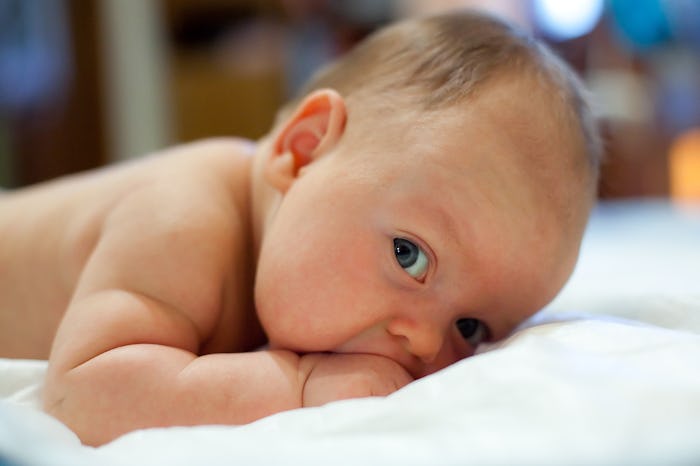Life

Why Do Babies Have Jaundice? 5 Things To Know About Skin Discoloration
As a parent, there’s nothing scarier in the world than being told something is abnormal with your baby. No matter the circumstances, your first act is to completely panic, especially if your kiddo is a newborn and fresh from the womb. For many parents, that means being told their child suffers from jaundice, a yellowing of the skin or whites of the eyes. Many may think this is uncommon, and wonder why babies have jaundice in the first place. But, as the Centers For Disease Control notes,about 60 percent of newborns are born with jaundice, making it more common than we think. But that does mean new moms and dads know everything there is to know about the medical condition. To get all the facts, I spoke with Carey Chronis, a pediatrician and host of public broadcasting’s Dr. Carey’s Baby Care, to have an expert weigh-in on jaundice and what it’s all about.
Jaundice may sound like a pretty scary term, but it’s very common in babies and rarely harmful. “As red blood cells are broken down, hemoglobin is released, and within the hemoglobin is bilirubin,” Carey says, explaining that the bilirubin is sent to the liver to recycled. “Unfortunately, as a baby, the liver isn’t working at full capacity and the bilirubin builds up in the body, causing a baby’s skin to look yellow.” Carey also notes that this can sometimes include yellowing of the eyes, but generally starts at an infant’s face and extends to the belly and chest as the bilirubin levels increase. To help ease parents’ fears, Carey shared five facts that all parents should know about jaundice in newborns and babies.
1Dehydration Is A Common Cause Of Jaundice
Dehydration one of the biggest causes of jaundice, and something that Carey says occurs in nearly all babies’ first week of life. “Depending on how much weight a baby loses during the first week, the bilirubin will become more concentrated. As the baby eats more, the bilirubin is diluted down to normal levels,” Carey says. The American Liver Foundation recommends increased feedings to combat jaundice or switching to formula if a baby has problems breastfeeding.
2Destruction Of Blood Cells Can Cause Jaundice
Carey explains that the transition from womb to real world can play a part in discoloration, as babies and mothers share a common blood supply during pregnancy. “Once the baby is on their own, their body begins producing their own red blood cells,” Carey says. “Because the mother’s antibodies and blood cells are still present in the baby, the baby’s blood may not be recognized and the mother’s antibodies attack the red blood cells, resulting in a rapid release of bilirubin.”
3Some Babies Might Require Phototherapy
According to the American Liver Foundation, most babies with jaundice have it cleared up within a week or two, but some may require a little treatment in the hospital. For most cases, Carey says that phototherapy is enough to rid a baby of jaundice. “Special lights, when shined on the baby, break down the bilirubin at the skin’s surface. In the hospital, this is typically accomplished by placing the baby in an incubator fitted with fluorescent lights or wrapping the baby in an illuminated blanket,” Carey says. Think of it as your baby’s own little spa box.
4Severe Cases Require Transfusions
In extremely rare and serious cases, Carey says an exchange transfusion may be necessary. Used to counteract the effects of jaundice and other blood diseases, an exchange transfusion includes removing a baby’s blood, diluting the bilirubin, and then replacing the blood.
5If Left Untreated, Jaundice Can Become Serious
While this is a common issue for babies, if left untreated, jaundice could become something much scarier. “High levels of bilirubin can lead to permanent hearing damage,” Carey says. “In severe cases, babies can develop kernicterus, a disease that deposits bilirubin into the brain, causing permanent brain damage, seizures, and in rare instances, death.”
This article was originally published on